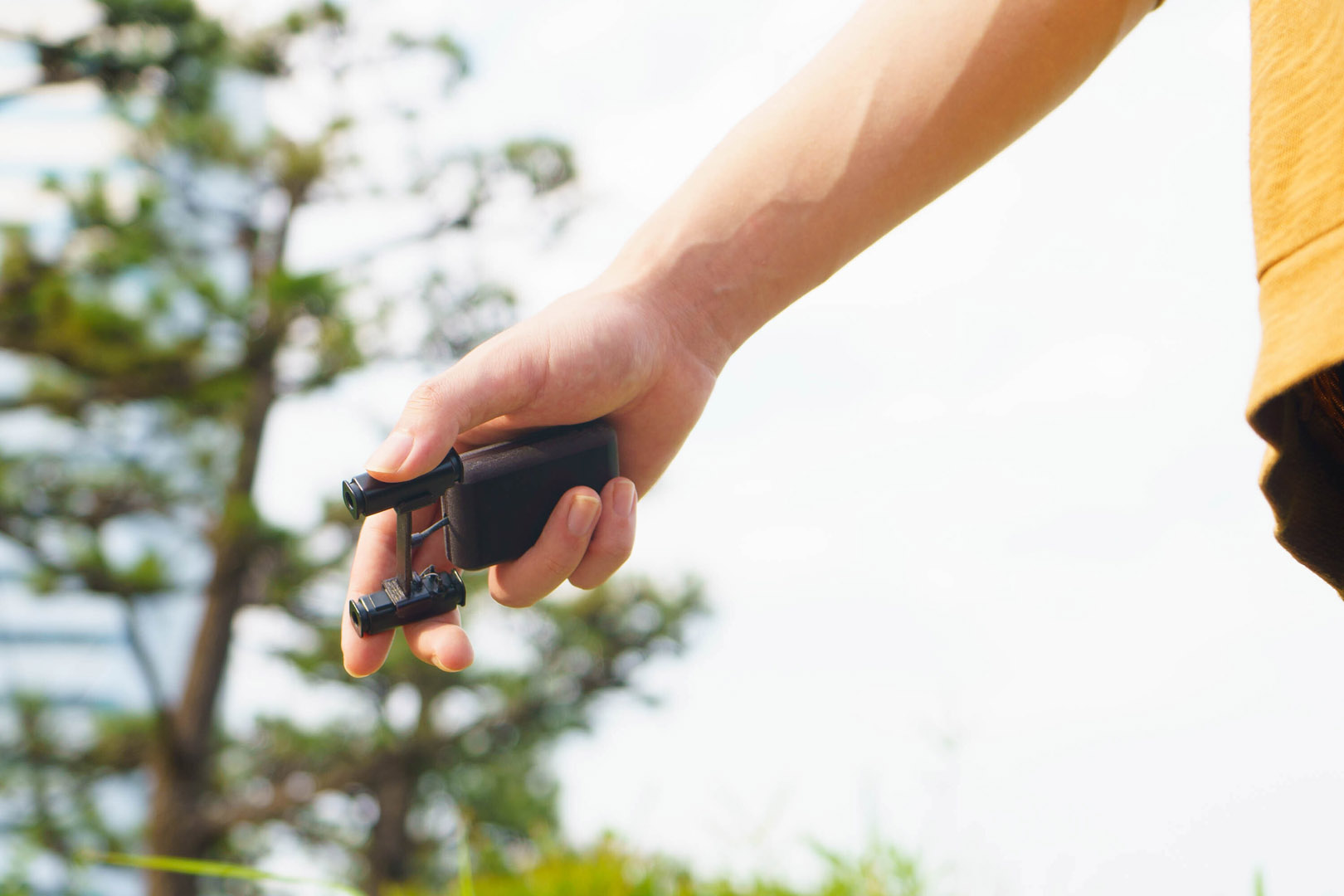“Waylet: Self-Contained Haptic Device for Park-Scale Interactions”
Conference:
Experience Type(s):
Title:
- Waylet: Self-Contained Haptic Device for Park-Scale Interactions
Organizer(s)/Presenter(s):
Description:
Although various haptic devices have been proposed so far, most of them are limited to use in laboratory or indoor environments, because such haptic devices are wired to external equipment for power supply and control. This can be a critical issue, particularly when using them in freely moving situations. In this study, we proposed a self-contained haptic device called Waylet for park-scale interactions. Waylets can provide translational and rotational pseudo-forces via asymmetric vibrations. To demonstrate the feasibility of our concept, we demonstrate an intuitive haptic navigation system in a park-scale mixed-reality environment with haptic rendering.
References:
[1]
Tomohiro Amemiya and Hiroaki Gomi. 2014. Buru-Navi3: Behavioral Navigations Using Illusory Pulled Sensation Created by Thumb-Sized Vibrator. In ACM SIGGRAPH 2014 Emerging Technologies (Vancouver, Canada) (SIGGRAPH ’14). Association for Computing Machinery, New York, NY, USA, Article 4, 1 pages. https://doi.org/10.1145/2614066.2614087
Digital Library
Google Scholar
[2]
Heather Culbertson, Julie M. Walker, Michael Raitor, and Allison M. Okamura. 2017. WAVES: A Wearable Asymmetric Vibration Excitation System for Presenting Three-Dimensional Translation and Rotation Cues. In Proceedings of the 2017 CHI Conference on Human Factors in Computing Systems (Denver, Colorado, USA) (CHI ’17). Association for Computing Machinery, New York, NY, USA, 4972–4982. https://doi.org/10.1145/3025453.3025741
Digital Library
Google Scholar
[3]
Astrid M. L. Kappers, Max Fa Si Oen, Tessa J. W. Junggeburth, and Myrthe A. Plaisier. 2022. Hand-Held Haptic Navigation Devices for Actual Walking. IEEE Transactions on Haptics 15, 4 (2022), 655–666. https://doi.org/10.1109/TOH.2022.3209350
Crossref
Google Scholar
[4]
Kouta Minamizawa, Yasuaki Kakehi, Masashi Nakatani, Soichiro Mihara, and Susumu Tachi. 2012. TECHTILE Toolkit: A Prototyping Tool for Design and Education of Haptic Media. In Proceedings of the 2012 Virtual Reality International Conference (Laval, France) (VRIC ’12). Association for Computing Machinery, New York, NY, USA, Article 26, 2 pages. https://doi.org/10.1145/2331714.2331745
Digital Library
Google Scholar
[5]
Jun Rekimoto. 2013. Traxion: A Tactile Interaction Device with Virtual Force Sensation. In Proceedings of the 26th Annual ACM Symposium on User Interface Software and Technology (St. Andrews, Scotland, United Kingdom) (UIST ’13). Association for Computing Machinery, New York, NY, USA, 427–432. https://doi.org/10.1145/2501988.2502044
Digital Library
Google Scholar
[6]
Takeshi Tanabe, Hiroaki Yano, Hiroshi Endo, Shuichi Ino, and Hiroo Iwata. 2020. Motion Guidance Using Translational Force and Torque Feedback by Induced Pulling Illusion. In Haptics: Science, Technology, Applications, Ilana Nisky, Jess Hartcher-O’Brien, Michaël Wiertlewski, and Jeroen Smeets (Eds.). Springer International Publishing, Cham, 471–479. https://doi.org/10.1007/978-3-030-58147-3_52
Digital Library
Google Scholar





